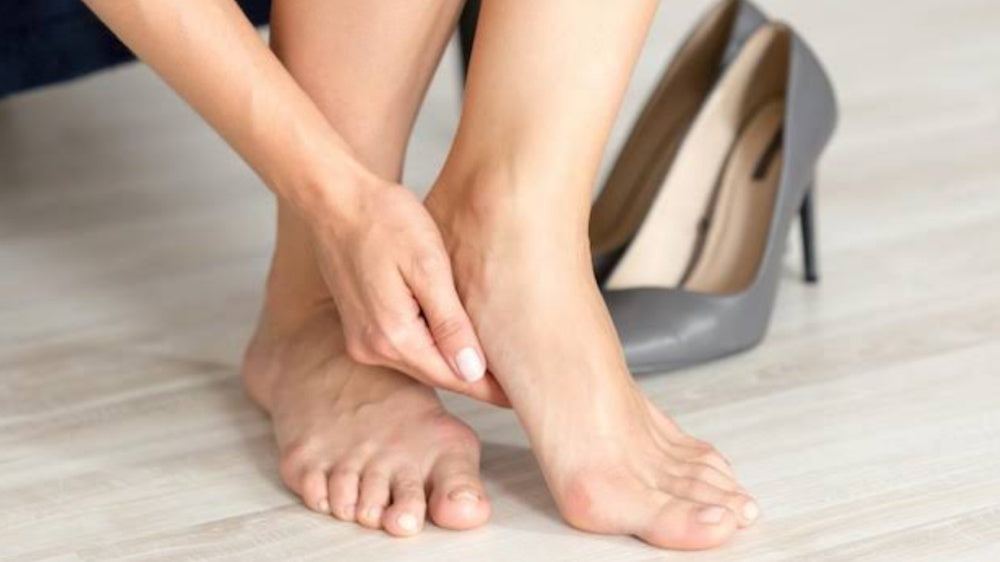


Understanding different types of foot conditions
With the passage of time, people are suffering from various foot conditions. To treat a specific foot condition, you have to take care and follow foot care routines accordingly.
This article will explore common ongoing foot conditions such as fungal nail infections, plantar fascitis, bunions, and diabetic feet. We will share its causes, symptoms, treatment, and preventive measures to stay safe.
Causes and symptoms of common foot conditions
There are many foot conditions that are increasing daily. These conditions include calluses, bunions, plantar fasciitis, Diabetic neuropathy, Athlete's foot, and ingrown Toenails. Regular visits to the podiatrist can help maintain these problems.
The common causes behind increasing foot condition rates include negative due to many environmental conditions, aging, genetics, unhygienic conditions, ill-fitted shoes, and improper foot care routines.
Depending on the type of foot condition, you can observe the visible symptoms. Mostly, you will experience burning, irritation, pain, redness, and stinging on your feet. In case of deformities, you will see the clear visibility of these conditions.
At this moment, the complete details about the fungal infections are shared;
These fungal nail infections are more common these days. This infection appears as yellowish-brown spots at the tips of the toenails. With this, the infection can be exceeded, resulting in rumbling and thickened nail edges becoming discolored.
Unhygienic conditions and a specific type of fungi cause fungal nail infections. Dermatophytes, molds, yeast, and bacteria are the factors behind these infections.
The risk factors associated with it are damaged nails, psoriasis, Athlete's foot, and conditions that affect the immune system.
These nail infections actually start at the edges and can separate the nail infections, causing Brittle and crumbled edges. The skin surrounding the nail becomes painful and swollen. The toenails appear yellow or white.

You can treat fungal infections in the following ways;
Itraconazole is used for fungal nail infections caused by molds or yeast. It's also useful for growing nails infection-free. Terbinafine is used if the infection is due to dermatophyte skin fungus.
A physician prescribes these medications after checking the patient's feet condition. The medications vary from patient to patient.
First, trim your nails. Then, use natural ingredients with antifungal properties, such as tea tree oil, olive leaf, garlic, vinegar, black tree, corn meal, and coconut oil.
Choose to wear breathable footwear, change socks daily, and wear clean socks. Trim your nails. Keep your feet dry. Use antifungal powder daily. Avoid sharing your socks and shoes.
It's a foot condition in which the plantar fascia fibrous muscles are inflamed. Due to this foot condition, there is a lot of heel pain.
Plantar fasciitis has major causes, such as an unfit shoe size, the footwear you choose to wear, and the types of walking surfaces.
The symptoms of plantar fasciitis are pain in the foot, bottom, and heel. You will also find Stiffness and pain in your foot arch.

Physical therapies, the use of anti-inflammatory drugs, Orthotics, injections, and foot restings are mainly used for this.
Following are the recommended types of physical therapies and exercises as follows;
Depending on the type and condition of the plantar fasciitis physician recommends the proper medication.
The comfortable, supportive, extra-cushioned footwear is best for plantar fasciitis patients.
Plantar Fascia Release Surgery is also an option to perform at the bottom of your feets.
Stretch your feet daily, massage them, and strengthen them with daily exercises. Use physical therapies. You can wear orthotics in your footwear.
At the base of your big feet, a bony bump on the joints forms called a bunion. The front bones move out of place.
Bunions appear due to prolonged pressure on the feet. They can also happen when wearing tight and narrow shoes. They can also appear in arthritis.
Pain, swelling, bulging bump outside the foot base, calluses, or corn formation.
Avoid wearing narrow-toe box shoes. Do foot exercises. Lose your weight and rest properly. Avoid wearing high heels.
Diabetic patients must follow more foot care routines to avoid foot problems.
Diabetes decreases blood circulation, which can lead to foot nerve damage. That's why you must follow proper foot care exercises and wear comfortable shoes.
The common foot problems in diabetics are foot ulcers, calluses, foot deformities, swollen feet, and bone infections.
Stay hydrated and active all day. Try to eat small meal portions after regular intervals. Don't Stress yourself. Keep your footwear clean, change your socks daily, and moisturize your feet.
Check your blood pressure regularly. Never go outside with bare feet. Cut toenails properly. Avoid smoking. Wear properly fitted, comfortable shoes.
Select breathable, easily adjustable, full-coverage shoes. Choose footwear with a lot of cushions. Don't buy any pointed-toe shoes.
To maintain the blood sugar level and for a healthy lifestyle, make sure to do proper routine checkups.

Try to do exercises daily. Take your medications as prescribed. Eat healthy meals without skipping.
In case of any foot problem, you need to consult the doctor. If you are facing any foot conditions, then treat them accordingly.
Foot conditions can be treated with proper foot care routines, treatment, and regular checkups. You can follow preventive measures to avoid foot problems before they occur. Choose your footwear wisely. Make sure to do regular checkups. An early symptom of a foot condition can help to cure it speedily.
Leave a comment
This site is protected by hCaptcha and the hCaptcha Privacy Policy and Terms of Service apply.